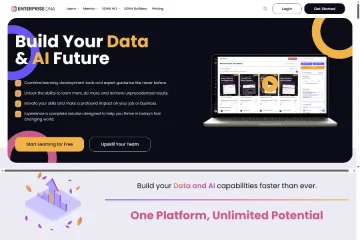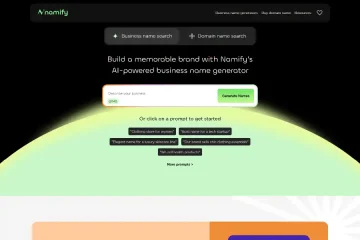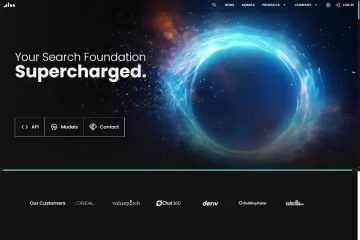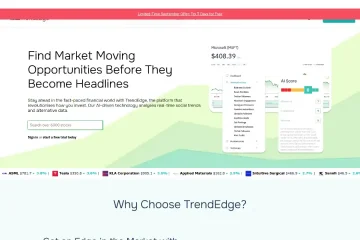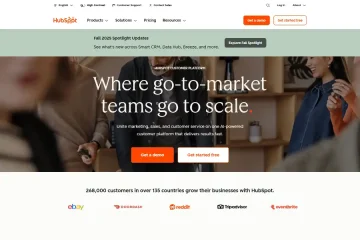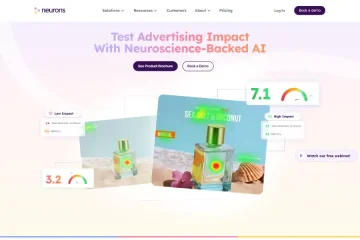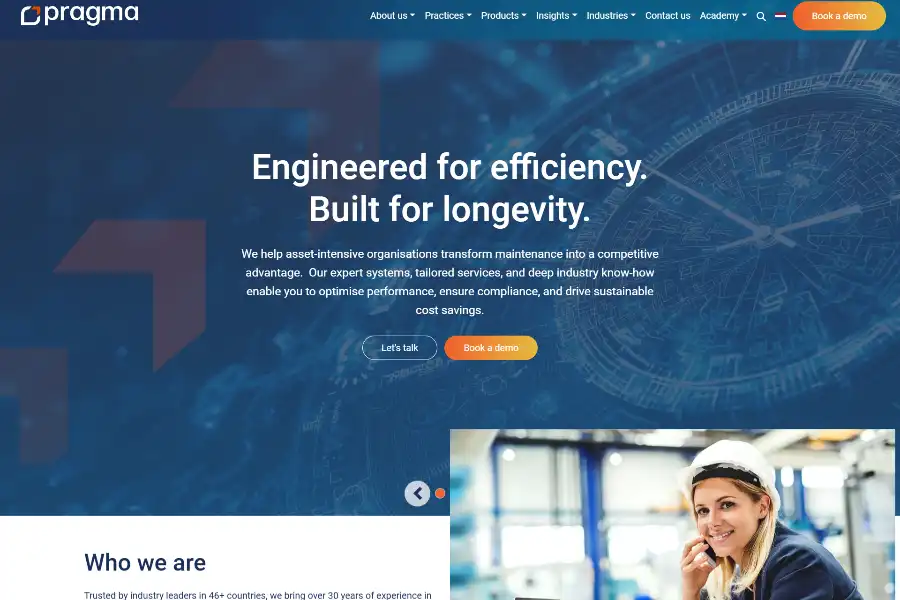
Pragma On Key: A Deep-Dive Analysis of the Enterprise Asset Management AI Platform
Introduction: From Reactive Maintenance to Predictive Intelligence
Asset-intensive industries are under relentless pressure to extend asset life, reduce unplanned downtime, and prove regulatory compliance without inflating operating budgets. Traditional Enterprise Asset Management Systems (EAMS) have digitised work orders and spares catalogues, but they rarely close the loop between data, decision, and measurable value. Pragma On Key, developed by South-African headquartered Pragma (Pty) Ltd, positions itself as the next evolutionary step: an AI-augmented EAMS that embeds predictive analytics, risk-based prioritisation, and closed-loop continuous improvement into the very DNA of an organisation’s maintenance and asset management processes. The following 360-degree review dissects the product’s technical architecture, functional capabilities, commercial model, and strategic fit for global enterprises and public-sector asset owners.
Product Overview and Strategic Positioning
Pragma On Key is delivered as a modular, cloud-first (SaaS) platform that unifies the typical pillars of an EAMS—asset register, work management, materials management, and compliance reporting—with a proprietary AI layer branded “On Key Intelligence”. Rather than selling software licences, Pragma packages the technology inside multi-year “Asset Management as a Service” contracts that bundle change management, reliability engineering consultancy, and ISO 55000-aligned governance. This hybrid model reflects Pragma’s 30-year heritage in physical asset management consulting and differentiates the offer from pure-play SaaS vendors such as IBM Maximo or SAP EAM that depend on third-party system integrators for domain expertise.
Technical Deep-Dive: How On Key Intelligence Works
Data Architecture and Ingestion
On Key runs on Microsoft Azure and adopts a medallion architecture (Bronze-Silver-Gold) in Delta Lake. Asset hierarchies, work-history, and real-time sensor feeds are ingested through pre-built connectors to OPC-UA, MQTT, OSIsoft PI, and RESTful APIs. A streaming Databricks job enriches raw telemetry with contextual metadata—equipment criticality, duty cycle, and environmental factors—before persisting curated datasets in the Silver layer. This contextualisation step is crucial; it ensures that downstream ML models understand not only vibration amplitude but also whether the machine is a standby pump or a base-load compressor.
AI/ML Engine
The AI layer is a composite of classical reliability models and modern AutoML. Three families of algorithms operate in parallel:
- Survival models (Weibull-Cox hybrids) predict remaining useful life (RUL) for high-criticality assets with sparse failure data.
- Anomaly-detection ensembles (Isolation Forest + LSTM autoencoders) flag deviations in multivariate sensor streams with adjustable sensitivity thresholds per asset class.
- Optimisation routines (genetic algorithms) balance maintenance windows, crew availability, and parts inventory to minimise total cost of risk.
All models are retrained weekly on the latest Gold-layer data; performance KPIs such as precision-recall and cost-avoidance are tracked in MLflow and surfaced to reliability engineers through Power BI dashboards.
Human-in-the-Loop Governance
Recognising that AI recommendations in safety-critical environments must be explainable, On Key surfaces SHAP values for every failure-risk score and retains a full audit trail of overrides. A “Confidence to Act” index—calculated from model drift, data completeness, and engineer feedback—prevents automation runaway while steadily expanding the scope of predictive interventions.
Core Functional Modules
Asset Strategy Optimisation
Users can build Failure Mode and Effects Analysis (FMEA) libraries directly in the system. The AI engine ingests these libraries and automatically generates dynamic maintenance tactics, suggesting interval changes or condition-monitoring replacements based on actual asset performance rather than OEM manuals. A Monte-Carlo simulation engine visualises the impact on availability, cost, and risk over a 10-year horizon.
Mobile Workforce Enablement
Inspectors capture vibration, thermography, or lubricant samples via native iOS/Android apps that work offline. Photos are auto-tagged with Azure Cognitive Services; defects are classified using a fine-tuned Vision Transformer. Once synchronised, the app displays AI-generated next-best actions such as “Schedule balancing within 72 hours – probability of bearing failure 74 %”. Technicians can accept, reject, or escalate each recommendation, feeding the human-in-the-loop dataset.
Supply-Chain Integration
On Key integrates with SAP or Oracle ERP to check real-time parts availability. The optimisation engine can delay non-critical work orders until parts arrive, reducing expedited freight costs. A digital-twin of the warehouse allows planners to run what-if scenarios: for example, the impact of consolidating two regional stores on overall stock-out risk.
Market Applications and Case Studies
Public Infrastructure: South African Rail Network
Passenger Rail Agency of South Africa (PRASA) manages 3,300 km of track and 4,600 rolling-stock assets. After two derailments caused by bearing failures, PRASA deployed On Key across its fleet. Within 18 months, unplanned wheel-set removals dropped 28 %, and the predictive alerts generated an estimated ZAR 120 million in avoided service disruption. The success led Treasury to mandate AI-driven asset management for all future rail concessions.
OEM After-Sales: Atlas Copco Compressor Division
Atlas Copco white-labelled On Key as “SmartLink 4.0” for its installed base of 180,000 compressors. The AI layer reduced mean-time-to-repair by 22 % and increased aftermarket service revenue 14 % year-over-year. Critically, the OEM used the anonymised fleet data to refine next-generation product designs, shortening warranty claim rates by 9 %.
Energy Utilities: Eskom Generation
Eskom operates 13 coal-fired power stations. A pilot on Unit 4 at Kusile Power Station fed 36,000 sensor tags into On Key. The system predicted a turbine blade crack 41 days before vibration alarms would have triggered. The planned outage cost R 18 million versus an estimated R 340 million in emergency repairs had the failure propagated. Eskom is now scaling to 29 units nationwide.
User Experience and Adoption Insights
Independent surveys by Verdantix (2024) show that On Key’s Net Promoter Score (NPS) of 67 is the highest among niche EAMS vendors. Users consistently praise the combination of “engineering-grade analytics” with “consultants who speak our language”. A common criticism relates to the steep learning curve for reliability engineers unfamiliar with Python or ML concepts. Pragma counters this with a 12-week “Reliability Coach” program that pairs each customer with a chartered engineer who co-creates the first 50 AI-driven work orders.
Commercial Model and Pricing
Pragma shuns seat-based licensing. Instead, pricing is an annual subscription indexed to the number of critical assets under management (AUM). Typical bands:
- Starter (up to 1,000 AUM): USD 65 per asset per year including basic AI models.
- Enterprise (1,000–10,000 AUM): USD 45 per asset with full AI suite and dedicated data scientist days.
- Mega-Fleet (10,000+ AUM): Custom, volume-discounted, includes on-prem deployment option for sovereign clouds.
Each tier bundles unlimited users, storage, and model retraining. Optional bolt-ons include spare-parts optimisation (+15 %) and digital-twin simulations (+20 %). Multi-year contracts (3–7 years) attract a 12 % discount and guarantee roadmap influence.
Competitive Landscape
When benchmarked against IBM Maximo Application Suite with Maximo Predict, On Key scores higher on time-to-value (4.2 vs 7.8 months) and consultant domain expertise (4.7 vs 3.4) but trails on ecosystem size (third-party add-ons) and global data-centre footprint. Compared to Uptake or Augury, Pragma offers deeper workflow integration—work orders are auto-generated rather than merely surfaced in dashboards—yet lacks the industrial-IoT hardware bundles those vendors provide. In short, Pragma competes on holistic asset-management transformation, not just AI accuracy.
Security, Compliance, and Sustainability
On Key is ISO 27001 and SOC 2 Type II certified. All AI training occurs in segregated, customer-specific workspaces; cross-customer model sharing is opt-in and anonymised. The platform supports IFRS 16 lease accounting and EPA GHG reporting templates. A new module, “Carbon Key”, calculates avoided CO₂e emissions by extending asset life and optimising energy-intensive maintenance routes.
Roadmap and Future Vision
Pragma’s R&D pipeline for 2025–2027 includes:
- Generative AI Work Instructions: Large-language-model-based creation of step-by-step maintenance procedures from OEM manuals and tribal knowledge.
- Edge Inferencing: ONNX models pushed to ruggedised tablets for sub-100 ms anomaly detection in underground mining environments with intermittent connectivity.
- Marketplace Ecosystem: An open API store where third-party reliability consultants can monetise custom failure-mode libraries.
Long-term, Pragma envisions On Key as the “operating system” for outcome-based asset-performance contracts, where payment is tied to availability or energy-efficiency SLAs rather than software fees.
Conclusion: Should You Bet on Pragma On Key?
For asset-intensive organisations that have already digitised basic maintenance transactions and now seek to graduate from reactive firefighting to predictive, risk-based optimisation, Pragma On Key offers a rare blend of deep engineering heritage, explainable AI, and outcome-centric commercial arrangements. Its strongest fit lies in brown-field environments—rail, utilities, mining, and heavy manufacturing—where historical CMMS data exists but has yet to be monetised. The requirement for cultural change and a multi-year partnership means the platform is less suited to organisations seeking a plug-and-play SaaS tool. Yet, for those prepared to embed asset management into their organisational DNA, Pragma On Key is not merely software; it is a strategic lever for sustainable value.

